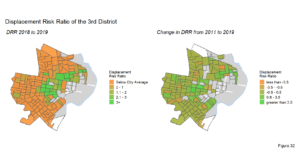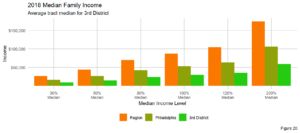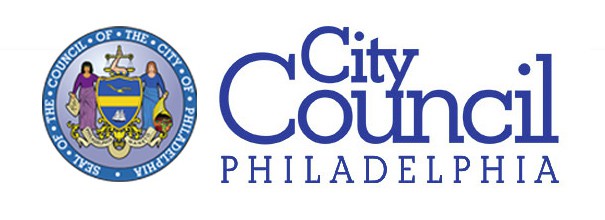New report leveraging Philadelphia’s Open Data highlights stark reality of affordable housing needs in West and Southwest Philadelphia
 PHILADELPHIA – City Councilmember Jamie Gauthier (3rd District) today released the results of a months-long study to evaluate the state of affordable housing in the 3rd District, which includes sections of West and Southwest Philadelphia. The findings of this study provide key insights into the racial and economic dynamics of 3rd District neighborhoods, and indicate that the need for affordable housing in this district is even greater than previous analyses suggested. This project was a collaboration between Councilmember Gauthier’s office, Urban Spatial, and Reinvestment Fund.
PHILADELPHIA – City Councilmember Jamie Gauthier (3rd District) today released the results of a months-long study to evaluate the state of affordable housing in the 3rd District, which includes sections of West and Southwest Philadelphia. The findings of this study provide key insights into the racial and economic dynamics of 3rd District neighborhoods, and indicate that the need for affordable housing in this district is even greater than previous analyses suggested. This project was a collaboration between Councilmember Gauthier’s office, Urban Spatial, and Reinvestment Fund.
“This study affirms what housing advocates and members of our community already knew to be true: that affordable housing is increasingly out of reach for a growing proportion of 3rd District residents,” said Councilmember Gauthier. “The findings of this study provide us with a very specific definition of affordability when it comes to neighborhoods in West and Southwest Philadelphia, and allow us to pinpoint locations in the District where displacement is imminent and affordable housing interventions are most urgently needed. I look forward to leveraging these learnings in future conversations about housing policy, zoning, and programmatic interventions, both at the District level and citywide.”
The study includes two components. The first is a Housing Market Report that pulls from publicly available data sources to provide a wealth of indicators on the state of the 3rd District’s housing market. The second is a Strategic Planning Tool that allows planners, advocates, developers, and residents to gain a better understanding of the relationship between housing costs and affordable housing resources.
Notable findings of the Housing Market Report include:
- 70% of District rental units cost more than $750 a month, a level affordable to only about 35% of rental households.
- Before the COVID-19 pandemic even began, 43% of 3rd District households were cost-burdened, meaning more than 30% of their income went towards housing costs.
- Cost burden in the District is largely driven by low incomes. 85% of cost-burdened renters earn less than 50% of the Philadelphia Area Median Income (AMI), with an average income of $35,000 per year for a family of three.
- The supply of subsidized units is far below demand: there are 7,904 such units in the District, meeting just 25% of the demand.
- The pricing target for new subsidized housing units is generally 60%-80% of the regional AMI, which for Philadelphia is $87,400. However, the AMI for census tracts in the 3rd District is about $30,000, which is just 34% of the regional AMI. ‘Affordable’ units created for households at 80% AMI will only be affordable to households earning twice the average income in the 3rd District.
- There is currently high price-based displacement risk in several parts of the 3rd District, including Mantua, West Powelton, the area around Malcolm X Park, and Cedar Park.
- There are not nearly enough public subsidies and resources to meet the entirety of the 3rd District’s affordable housing needs. Even if an increase in supply alleviates upward price pressure in the district, the cost of construction would put new units out of reach of many residents because of the District’s low incomes.
- It would take approximately $15.6 million each month in either additional income or subsidy to eliminate cost burdens for all renter households in the District. This gap is likely substantially larger following the increase in unemployment associated with the pandemic.
 The report includes new, wide-ranging demographic data for the District, including breakdowns by race, income, poverty, educational attainment, employment, and other indicators. It also provides a great amount of detail on the District’s housing supply, including the number of units, age of housing stock, concentration of rental licenses, and location of subsidized housing units.
The report includes new, wide-ranging demographic data for the District, including breakdowns by race, income, poverty, educational attainment, employment, and other indicators. It also provides a great amount of detail on the District’s housing supply, including the number of units, age of housing stock, concentration of rental licenses, and location of subsidized housing units.
The strategic planning tool is an interactive dashboard that aims to identify places where affordable housing could absorb displacement pressure, and create a more equitable future for residents of the District. The tool helps users understand where rent burdened households live throughout the 3rd District; where subsidized affordable housing is located; and, most importantly, where these two indicators align (or misalign). Stakeholders can target new affordable housing resources in tracts where burdened households outnumber subsidized housing units most severely.
“The COVID-19 pandemic has shined a spotlight on the importance of housing stability while at the same time exacerbating some of the trends that we’ve long struggled with in Philadelphia, such as income inequality and an inadequate supply of low-cost housing options,” said Emily Dowdall, policy director at the Reinvestment Fund. “This report and tool can help ground decisions about how to use limited public resources in data in order to build the 3rd District so many residents want to see – where neighborhoods can thrive and grow without losing longtime residents and where no one has to make a choice between paying for housing and other essentials.”
“In her short tenure, Councilmember Gauthier and her team has made equity the keystone of housing and community development policy in the 3rd District and beyond,” said Ken Steif, founder of Urban Spatial. “Urban Spatial is delighted to partner with the Councilmember’s office and Reinvestment Fund to work toward this goal. Philadelphia’s open data resources are a critical Planning asset, and we hope this project demonstrates their utility for affordable housing planning.”
Both the report and the strategic planning tool were created using data from Open Data Philly; it is widely replicable for other Council districts, and could be scaled to the City level. As more affordable units are made available, these assets will help stakeholders to determine the most strategically advantageous places to situate them in order to stabilize neighborhoods and promote housing equity for all residents.
Click here to access the study.
# # #


